An interview with Dr. Rajesh Shah
After about eighteen years of study, practice and teaching in the homeopathic profession, what do you think about homeopathy in general?
 An interview with Dr. Rajesh Shah
An interview with Dr. Rajesh Shah
by Hiloni Sanghrajka
The Homoeopath - The Journal of the Homoeopaths, No.69 Spring 1998
After about eighteen years of study, practice and teaching in the homoeopathic profession, what do you think about homeopathy in general? 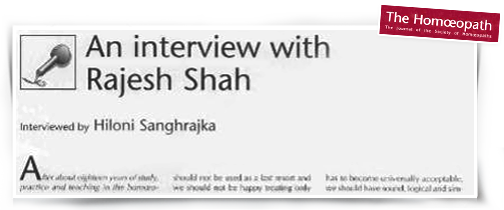
The homeopathic profession has taught me different things at different stages. In the very early years, it gave me a sense of exuberance on realizing that I had learnt a technique of healing which was a panacea! Homoeopathy as a science can often give the enthusiastic novice a feeling that he can change the world, whilst the more experienced practitioner realizes that what he knows is not enough and accepts his limitations. Nevertheless,over year of serious thinking, the knowledge and the experience get consolidated.
Now there is a clearer understanding. It is now possible to judge the prognosis of most medical conditions. It can now be stated emphatically that allergies are curable and so are most of the acute infections. Homoeopathy can cure many of the psychosomatic diseases such as migraine, eczema, early cases if rheumatoid arthritis, ulcerative colitis,etc.,but in cases of psoriatic arthritis or schizophrenia , the capacity to cure is limited. Homoeopathy is an excellent healing faculty and it has a terrific potential, provided we apply it for the right condition at the right time, in a right manner....
How do you view the future of homoeopathy as a medical system in the years to come?
I have always felt that homoeopathy has been underrated as a medical system. I am terribly upset with the idea that we often restrict the application of homoeopathy to the treatment of certain non treatable condition as the 'last chance' therapy. I think homoeopathy should not be used as a last resort, and we should not be happy treating only some hopeless cases of neurotics, depression , terminal cancers and the like. We should not be unknowingly working just as a counselors.
My vision of the future homoeopathy is that of a mainstream medicine. And why not? Homoeopathy ,beyond doubts, can tackle most kind of infections including some rare infections resistant to the largest antibiotics. Homoeopathy is capable of handling acute as well as deep-seated chronic diseases. There is a a hope for autoimmune diseases, for collagen diseases. This shows the strength and capacity of our system.
Homeopathy as I hope to see in future, will have a revolutionary face -lift. Homeopathic medicines should be better understood and evaluated, in the modern light of immunology and nuclear physic. There will be a major breakthrough in this area, one day, I am sure. You will then find homeopathy enjoying its deserving position.
I must admit at this point, to achieve the desired status for homeopathy, a lot depends on all of us. I mean, we homeopaths.
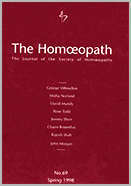 What is your opinion about the new teaching techniques and methods of case analysis?
What is your opinion about the new teaching techniques and methods of case analysis?
Well, I can only say that any prescribing technique or method used to analysis the case should be logical and based on a scientific understanding. I am of opinion that if our science has to become universally acceptable, we should have sound, logical and simple methods of analysis as far as the prescribing is concerned.
Rajesh, can you elaborate more on this? I have read in your editorials that you are against certain case analysis techniques, which you find illogical and inexplicable...
Basically, the way I view this issue is that there are two major processes involved in the homeopathic prescription, where one has to be careful. One, the case analysis, two, the remedy understanding. What has happened lately is that under the pretext of refreshing thoughts, some new case analysis method have been introduced which are far from being scientific. For instance, the case analysis based on the them of dreams and delusions. I stress that it is important to consider the repeatedly seen dreams of the patients, in the prescribing totality. But it is ridiculous to make speculative interpretation of the dreams and delusion, and base the prescription on such a fantasy. This is unscientific. When it comes to interpretation, it tends to become quite subjective and personal. For instance, every prescriber can offer a different analysis to ever dream them, therefore leading eventually to a wide range of remedy suggestions. This could certainly be harmful.
Secondly, the remedy understanding. Hahnemann, Boenninghausen, Kent and other masters understood remedies more or less in black and white. But somehow, the new trends of incorporating the study of the materia medica with mythology, symbolism, dream proving, story telling and so on, have introduced a lot of unproven data, which I am afraid, will take homeopathy far universal acceptance.
How exactly is it that you think that a dream-or delusion -based homeopathic prescription could be harmful?
My counter question to you is , how do you justify the specificity of such an approach in this this era? I have heard the stories that one prover is administered a remedy, with intent to 'prove' it! I read a report in an American journal of a teacher administering a remedy to a patient. The teacher then declares that not only the patient who was administered the remedy would get cured but all other in the neighborhood who required the same remedy, would also get cured! Isn't it outrageous? How can homeopaths tolerate this kind of teaching? If we go to the WHO or Prince Charles, with this kind of development in homoeopathy they would surely withdraw all their support.
I strongly feel that the time is changing, there is a lot more awareness and homeopaths can not be fooled any more with such fantasies and theorizing. Homeopathy for me is scientific system an and not a spiritual form of healing.
How can there be a speculative materia medica? Can you give some examples?
Speculative materia medica is one where the entire understanding of remedy is imaginary and not supported by the drugs proving. A well known example, is of Aurum metallicum. In brief, against common belief, Aurum metallicum is neither industrious, nor conscientious. He isn't responsible or dictatorial and isn't ameliorated by music! Aurum is not religious and does not have any great sense of duty. The commonly held image of Aurum has originated from fantasy land! Similarly, we have a lot of such baseless symptoms existing in the medica. I am strictly against it.
What could be the origin of these speculative theories according to you?
It is difficult to say. I think, some of these ideas are the stretched out version of grand generalization, which give one a free way to sky high imagination. Although, I am sure Boenninghausen must not have ever imagined that his concept of grand generalisation will one day get such a fantastic transformation! Boenninghausen wanted to say that certain modalities may be generalized to have broader application of the materia medica. Boger stretched it little further. Phatak and other supported it in the sixties. Probably, those in search of new methods to teach old ideas and for the entertainment of the delegates at seminars with these so called novel methods did the extreme distortion.
But, don't you think such analysis and the teaching is thought-provoking and interesting? Do you think it helps the student understand remedies better? 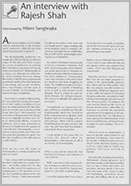
Yes, I agree that it is interesting to hear such theories and stories. But are we interested in just getting entertained or in producing consistent result in practice? Do we want to make homeopathy merely interesting to study or have an effective practice? More and more experienced practitioners are getting conscious over this issue and are have started showing a long term concern. It may be perhaps very entertaining to hear the cases where the prescriptions are derived from some vague symptoms. I was told that a remedy is taken by a prover sitting in a room and it is also believed to be proved by other person sitting in another room but without taking the dose of the remedy! He just meditates and proves the remedy! I am hearing that based on the dreams seen by the mother during pregnancy are used to prescribe a remedy for a 10 year old boy. One of the theories I heard lately was about a case where the prescription was based on the past life of patient!... it is interesting, no doubt, but is is funny and utter nonsense. Where is the limit? Where is the rationale?
An analogy will not be out of place if I say that when an allopath successfully treats cases of pneumonitis with standard antibiotics, he makes no dramatic theories, he just does his job. It is more important for us repeatedly succeed and produce predictable result.
What about the doctrine of signatures?
The doctrine of signatures is good to gather the initial information about the remedy. But, you do not need to work hard to find a relation with every feature of the original source and make a connection with the remedy. One could say Graphites is an inert substance and correspondingly the remedy is dull and docile. But the same rule does not apply for Lycopodium which is also an inert substance and similarly for Ferrum. If we had to make such connections, we would have an interesting materia medica where a banana remedy should be great aphrodisiac and so on! This is not homoeopathy.
I do not believe in such speculative theorizing. Hahnemann was wise enough to guard against his own proposed theory of the doctrine of signature.
Let me ask you a frequently asked question, what does classical homoeopathy means to you?
It is simple. Classical homoeopathy, for me is nothing but practice based on fundamental principles laid down by Hahnemann. A case has to be well taken, thoughtfully analysed, thoroughly evaluated. The prescribing totality should cover the mentals, the generals, the particulars. It should also reflect the pathology, the miasmatc predisposition.
The totality should reflect the patient as individual. The selection of single remedy , correct potency selection based on the susceptibility and other criteria along with a long term plan for the case, are all integral components of classical homoeopathy.
Another similar question is about the constitutional remedy. What is it according to you, and does the constitutional remedy remain same all life-long?
I think, There should be no controversy about it. The constitutional remedy is one which the constitution calls for at any given phase in life. It can not change frequently, but it can not remain the same life- long. It should not.
One can compare the constitutional remedy to an overcoat. The measurement of the coat would change very slowly form birth to the age of,say,18 years, after which its height remains more or less the same but the width might change, say every 5-10 years. Its consistency, the thickness, and the material might require some change depending on the weather. If it snows, one might need to wear gloves and a scarf. This is just an analogy.
The constitutional remedy essentially covers the totality of the case. The constitutional remedy cannot be determined on the basis of some vague speculative theme. Our body system or constitution is very intricate and we understand it little. I do not think that we can fit it in a box of a single constitutional remedy forever.
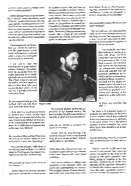 How often do you change remedies in your practice? Whenever you do changes the remedy, does it not mess up the action of the previous remedy, especially in cases with an acute flare-up during chronic treatment?
How often do you change remedies in your practice? Whenever you do changes the remedy, does it not mess up the action of the previous remedy, especially in cases with an acute flare-up during chronic treatment?
While treating the deep-seated, chronic disease, once the remedy is well-selected and administered, it does not require a changes for a long time. The higher potency may be required at a later date.
The changes of remedy is required in three main incidences: One, if the remedy does not produce any effect, even after administering a higher potency, it nees a change of remedy simply because it is not indicated.
Two, the first remedy has done its job using one or more potency, leading to change of symptoms and calling for another remedy. Third, if the patient is confronted with an acute ailment during the treatment of chronic disease, he would require the indicated remedy to combat the acute disturbance.
Whilst treating the acute disease, one may be required to change the frequently. This is because of the pace of the disease, the symptoms changes and hence the remedy. For instance, the treatment of pneumonitis may require Arsenicum in the early phase and then may later call for Phosphorus.
There should be a reason for every change of remedy. At the same time, one should not rigidly stick to the same remedy when it's no longer indicated. An indicated changes of remedy cannot mess up the case. Needless to say that no two remedies are ever indicated at the same time.
How much importance do you give to the miasms? Do you regularly 'un-block' cases?
Miasms are quite important. They give you an idea about the depth of the illness, they give an indication about the nature of the remedy required. It helps you distinguish from superficial remedy to more appropriate deep acting remedy. For example, if you are confronted with a case of lung cancer and the patient has the typical fears of Aconite. If you give Aconite, it may help but superficially. There is nothing wrong with it, but you should be aware that the patient will later need a deeper acting remedy, maybe calcarea or Thuja.
It was Hahnemann, as you know, who on witnessing frequent relapses after initial improvement with indicated remedies such as Belladonna, Pulsatilla and Hepar Sulphuricum, came to conclusion that many of his cases required deeper 'miasmatic' remedy for more lasting recovery.
I do not use nosodes to routinely unblock cases.But I have observed that they are often indicated in many chronic diseases. In many cases I does of the corresponding nosode, administered at some time during the course of treatment, is part of the constitutional prescribing strategy. Although, there are plenty of cases which do not require a nosode throughout the course of treatment.
However, the nosodes can be successfully prescribed as individual remedies. For instance, we have numerous cases of Tuberculinum, Carcinosin, Thyroidinum and so forth.
Do you use organ remedies, mother tinctures, or biocheme remedies in your practice?
I have no experience with organ remedies and mother tinctures. I feel it is crude form of homoepathy. I may be wrong.... I do not use biochemic remedies.
Do you usually go up through the scale of potencies or repeat the same?
Once the remedy has been selected, I usually start a dose of 200C potency. Many cases may need a repetition at the end of four to eight weeks. Some may need a higher potency after 2-3 months and even higher on a later date.
All cases are different, some may require just one dose of 200C and absolutely nothing for over a year. Some may need a dose every month for about 4-5 months and then a higher potency or change to connecting remedy. Some case may require a repetition of remedy, say twice a day every day for as long as six months!.It all depends on the case.There are rules for every step in classical prescribing. One just can not hap hazardly act as per the whims. There should be a logic in every action. The posology is a methodical science.
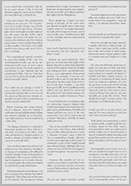 Could you tell us in brief about your approach to case analysis on what you call 'hard-core prescribing' ?
Could you tell us in brief about your approach to case analysis on what you call 'hard-core prescribing' ?
Well , hard-core prescribing, to put it in simple words, is nothing but the prescription based on the solid, logical, non speculative and non-controversial totality of the case. It should involve a sound method of analysis whereby most prescribers could come to a similar remedy prescription and plan of treatment.
Homoepathy as we know, is an art. But we should not forget that art is founded on scientific principles. It is not an abstract art. In my opinion the homoeopathic principle and their application should not be based on vague ideas rather on hard-core logic and facts.
Do you think that there could be a method in homoeopathy where all the prescribers could come to a single remedy? Is is really possible?
I think we must have a method whereby, if not all, most prescribers could come to a similar conclusion after the case analysis. I understand that it is difficult. But I am sure it is not impossible. What is more important is that is necessary to have some kind of standardization in case analysis and the planning. Without which our science cannot advance.
What happens in our field is that you attend a seminar with the same teacher on the fourth occasion but could not solve a single case during the fourth teaching encounter!
I am aware that the homoeopathy is quite individualistic. However, I do not believe in escaping from the reality that many of our methods fairly are un standardized. This, I think, is mainly because we tend to prescribe largely on the variable data. We need standardization which, in my opinion, is possible with hard-core prescribing.
Do you propose some specific method when you talk about such hard-core prescribing?
I think whichever method you choose to analyse your cases, should have sound logic and a hard-core totality. You may choose to go Kentian or may prescribe on the essence or using the keynotes, or a combination of approaches, as the case may demand.
You are often talking and teaching about the concept of Facets? What is it exactly and is it not a new theorizing?
The concept of Facets I talk about is something based on logic. It is simple based on the drug proving. I assure you that it is no new toy theorizing!
What exactly do mean by the ' Facets of the remedy'?
I believe that every remedy has multiple facets. It depends on what we see in a patient at given time and how we compare that with remedy. I believed that it is possible to use every polychrest more widely. We cannot restrict the applicability of our remedies to any single idea, for instance, Pulsatilla for timidity or Lycopodium for cowardice. Cowardice or timidity are nothing but some prominent facets of the said remedies. The facets is like a symptom syndrome, like a group of inter-related symptoms in a remedy and proven together, in the same prover.
The concept of facets wides the application of our materia medica. We have so many Pulsatilla cases which are not mild or yielding but rough and rash.
How do you decide or recognize the facets of remedies?
Strictly from the drug proving. I do not believe in any source other that the drug proving as far basic remedy appreciation is concerned.
What about the clinical proving, i.e symptoms cured after giving a remedy which does theoretically cover those symptoms...
No! I do not believe in adding those symptoms to my repertory which are cured after administering the remedy. This is simply because, I expect the remedy the remedy to do a lot more that what it has been known to prove in the drug proving. And, whatever it can remove as a simillimum cannot be presumed to be the same as what it can produce as a symptom.
Can you further explain 'the factes' with some example?
Yes. As I told you, may understanding of the facets of any remedy comes from the drug proving. The interesting thing is that I try to see what kind of emotions have prodiced together in the same prover.
For example, you know that sadness is produced in over 400 drugs. Similarly, cowardice is produced in the drug provings of 80. If you have a patient who has these two features, i.e. sadness and cowardice, what will you do? You will probably repertorise to see which are the common drugs producing there symptoms. I will look at it in a slightly different manner. My search will be for a remedy which has the capability to produce cowardice and sadness, at the same time, in the same prover...
Is there any remedy like that...?
Yes, there is. It is sulphur.Sulphur is probably the only remedy in the entire materia medica which has produced these two important mental attributes in the same prover. This is the facet of sulphur. Likewise sulphur has some other facets. Most remedies can be studied this way...
Sounds interesting. How do you get this idea at the first place to study the facets?
Frankly, I can not recall how it happened. It was around nine years ago when it occurred to me, that is important to see which symptoms were being produced together in the drug proving. Constant study of the drug proving and the repertory allowed me to identify this unique concept which I have thereafter repeatedly applied to check if it works. On applying it on numerous cases, I could see its applications as well as the limitations... Many medicines have been studied and evaluated with this idea and it has helped me tremendously in my practice.
Is it only the combination of the mentals and the emotions that you look for, or the physicals as well? 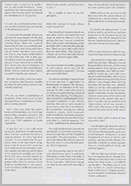
It is not only the mentals. When you look into the source books with the idea of such group of symptoms, you will find amazing things. There was a case of hemorrhoids who has as irritable temperament. Even after a long study there was no clarity. You have cases where you have a long history written before you, but it does not click! In this case, we tried to search for possible combinations. It was interesting to find that Nux vomica has proved irritability in the prover where it also proved hemorrhoids. And we could see Nux vomica covered the totality and could cure it.
With the facet idea, many less-important symptoms also become valuable guidelines for prescribing. We have consistently observed.
Why do you think a combination of symptoms in the same prover is more important than a compilation of symptoms in more provers?
Well, when you study the source books and the repertory, you find a huge mass of data, enough to get lost in. Just imagine, 3000-plus symptoms of Sulphur,over 1100 symptoms of carbo vegetabilis!
n practice,for a case with seven symptoms. Instead of considering remedies, that have produced the seven in separate provers, it's more logical to consider the one remedy that has produced three of the interrelated symptoms,if not all seven at the same time in the same prover. For example, a remedy capable of producing mortification at the mind level, neuralgic pain in the lower limb and a wart like growth on the skin in a single prover is more important than the remedy which produces mortification in one prover, warts in another,and the neuralgic pain in the third.
Which is the remedy...and did you have a case...?
Yes, a couple of cases. It was Staphysagria...
Does this concept of facets, always work in practice?
One should not hesitate to doubt any new ideas. In fact, one must! I too was skeptical about its efficacy in the beginning. But now, I can say confidently that it aids greater understanding of the remedies and in selecting the prescription. There are some rules and criteria that one must follow. This concept facilitates case-analysis and case-individualization, whenever applicable.
You have introduced another approach to case analysis, which you call 'The Phenomenological Approach.' Can you give some brief idea...?
The phenomenological approach perse is not new, but its application in homoeopathy is original. The Phenomenon idea is an extension of the facts concept. It is the consecutive event of symptoms in a patient, being compared with the drug proving. The drug providing is not just the conglomeration of dissociated symptoms. If you closely examine, there are so many symptoms occurring in a chain form. For instance, the Lycopodium proving has sadness leading to anxiety, which eventually leads to irritability, very basic symptoms, but very important because they follow each other in a definite sequence. This is what I understand by phenomenon.
The study of phenomena reveals the individual's characteristic enabling us to perceive the true portrait of patient's personality. The Phenomenon, I have observed, reflects the intricate nature of the inner man in a decipherable manner. This is important.
One drug providing sources are full of such phenomena and it is extremely interesting to study them and apply in practice. It has opened up new avenues for me in practice. I think this concept can best be illustrated with the help of the cases.
How do you perceive such phenomena in the patients and in the remedies?
Whilst taking a case, you have to find how patient behaves on experiencing a strong emotion. Many times patients tell us quite spontaneously.
To identify the phenomenon in the materia medica, as I told you, you have to go back to the drug proving and the repertory. You will be amazed to find that our repertories have such phenomena listed almost on every page!
What is your experience with the newly proved drug and drug proving?
I am somewhat conservative with regards new proving. Although, it would be good idea to have new entries in our materia medica. In my opinion, we have enough remedies, over 3000 already! I prefer to handle my cases with a couple of hundred remedies, which have a well described proving and well-proved efficacy. I am unhappy about learning, teaching and proving new remedies which can not be made available in the pharmacy for the use of the homoeopathic community at large. My proposal is to re-prove some of the century-old polychrests in the modern light. Sometimes, I wonder, are we using Tuberculinum which was proved in 1878, and is the source of that Tuberculinum the same as one made today?
Can you share with us some of your successful cases...?
I would rather talk about the failures in practice,of which there are plenty! The nature of homoeopathy, gives every homoeopath, irrespective of background, his share of failures. And at times, one has terrible failures. You prescribe a remedy for acute hyperpyrexia ar a small patch of vitiligo, and noting happens.
I tell you that every failure in practice is an opportunity for introspection, offering an opening to learn, to find out where you went wrong. I call failures ego-breakers:They keep you on your toes. As there is a system of having a death-conference in hospital practice, we homoeopaths should have a kind of "failure conference".
Rajesh Shah has practiced homeopathy for 18 years. He is the founder and head of The Foundation for Homeopathic Research, Bombay, India and teaches at CMP Homeopathic medical college & Hospital. He is the author of the book, My Experiences with Ferrum Metallicum (1992), and Editor of Homeopathy Times. He conducts an intensive clinical training cource in Bombay, for European and American homeopaths. He may be reached by e-mail at:rajesh@rajeshshah.com; Web-site: http:/www.rajeshshah.com Dr. Shah will be on a teaching tour in US, beginning in November,1998.
More articles, press-news >>